Related Research Articles

William Kidd also known as Captain William Kidd or simply Captain Kidd, was a Scottish privateer. Conflicting accounts exist regarding his early life, but he was likely born in Dundee and later settled in New York City. By 1690, Kidd had become a highly successful privateer, commissioned to protect English interests in North America and the West Indies.
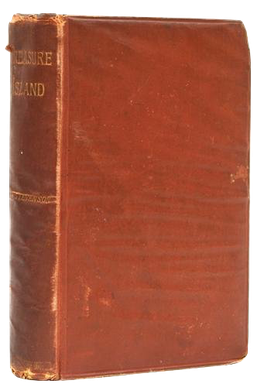
Treasure Island is an adventure novel by Scottish author Robert Louis Stevenson, telling a story of "buccaneers and buried gold". It is considered a coming-of-age story and is noted for its atmosphere, characters, and action.

The Boyd massacre occurred in December 1809 when Māori of Ngāti Pou from Whangaroa Harbour in northern New Zealand killed and ate between 66 and 70 European crew members from the British brigantine ship Boyd. This was the highest number of Europeans killed by Māori in a single event in New Zealand.

Mary Read, fictionally known as Mark Read, was an English pirate about whom there is very little factual documentation. She and Anne Bonny were two famous female pirates from the 18th century, and among the few women known to have been convicted of piracy at the height of the "Golden Age of Piracy".
Captain Hector Barbossa is a fictional character of the Pirates of the Caribbean franchise, appearing in all five films in the series. Starting out as a villainous undead skeleton in The Curse of the Black Pearl (2003), Barbossa dies at the end of the film. However, the character is revealed to have been resurrected and brought back from the dead by Tia Dalma by the end of Dead Man's Chest, and has since appeared in anti-heroic roles. Captain Hector Barbossa was one of the nine Pirate Lords in At World's End (2007), a privateer in service to King George II and the British Navy while also seeking revenge against Blackbeard in On Stranger Tides (2011), as well as a rich rogue and influential leader of a prosperous pirate empire and fleet in Dead Men Tell No Tales (2017). Throughout the series, Barbossa has been conceptualized as a "dark trickster" and the evil counterpart of Captain Jack Sparrow.
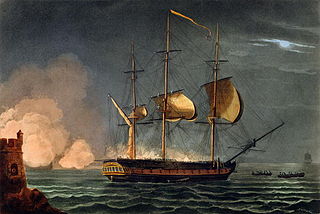
HMS Hermione was the lead ship of the Hermione-class, a six-ship class of 32-gun fifth-rate frigates of the Royal Navy. She was launched on 9 September 1782 at Bristol. Hermione was commissioned and then paid off a number of times during the 1780s. She underwent repairs between October 1790 and June 1792, followed by a period spent refitting at Chatham Dockyard until January 1793. She was recommissioned in December 1792 before sailing to the Jamaica in March 1793. Hermione served in the West Indies during the early years of the French Revolutionary Wars, participating in the British attack on Port-au-Prince, where she led a small squadron that accompanied troop transports.

The Twisted Claw is Volume 18 in the original The Hardy Boys Mystery Stories published by Grosset & Dunlap.

The True Confessions of Charlotte Doyle is a historical novel by the American author Avi published in 1990. The book is marketed towards children at a reading level of grades 5–8. The book chronicles the evolution of the title character as she is pushed outside her naive existence and learns about life aboard a ship crossing from England to America in 1832. The novel was well received and won several awards, including being named as a Newbery Honor book in 1991.

The Black Pearl is a fictional ship in the Pirates of the Caribbean film series. In the screenplay, the ship is easily recognized by her distinctive black hull and sails. Captained by Captain Jack Sparrow, the Black Pearl is said to be "nigh uncatchable". In the first three films, she either overtakes or flees all other ships, including both the Interceptor, which is regarded as the fastest ship in the Caribbean, and the Flying Dutchman, which is faster than the wind. Her speed is derived from several factors such as the large number of sails she carries and being partly supernatural. As stated in Dead Man's Chest and At World's End, the Black Pearl is "the only ship that can outrun the Dutchman" and this is evidenced in the maelstrom battle between the two ships in the movies.
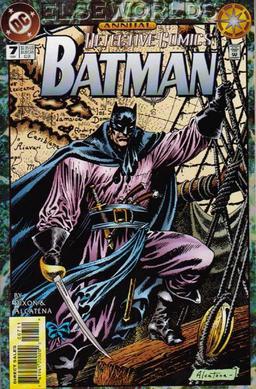
Leatherwing, also known as Batman: Leatherwing, is a DC Comics Elseworlds story published in Detective Comics Annual #7 in 1994. It was written by Chuck Dixon and illustrated by Enrique Alcatena, who also devised the plot.
Charlotte Badger was a former convict who was on board the Venus during a mutiny in Tasmania in 1806. Taken to New Zealand, she was rescued by Captain Turnbull of the Indispensible, and eventually she returned to Sydney. In the intervening centuries, a number of writers have contributed to the fiction that she took an active role in the mutiny and she became known – erroneously – as Australia's first female pirate.
Hugh Pigot was an officer in the Royal Navy. Through his connections and their patronage, he was able to rise to the rank of captain, despite apparently poor leadership skills and a reputation for brutality. Writing in 1826 William James stated, "...he has been described to us by those who knew him well, as one of the most cruel and oppressive captains belonging to the British navy." While he was captain of HMS Hermione (1782), he eventually provoked his men to mutiny. This mutiny, became the bloodiest in the history of the Royal Navy and left Pigot and nine other officers dead. The Navy hunted down and executed a number of the mutineers and recaptured his ship from the Spanish, to whom the mutineers had turned it over.
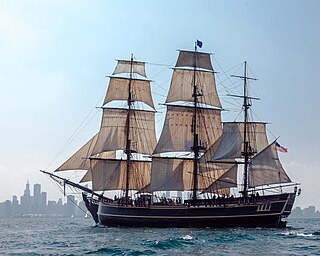
Bounty was an enlarged reconstruction of the original 1787 Royal Navy sailing ship HMS Bounty, built in Lunenburg, Nova Scotia, in 1960. She sank off the coast of North Carolina during Hurricane Sandy on October 29, 2012.

The Atlantic World refers to this area between the European colonisation of the Americas (1492-) and the early nineteenth century. Piracy became prevalent during this era because of the difficulty of policing this vast area, the limited state control over many parts of the coast and the competition between different European powers. The best known pirates of this era are the Golden Age pirates (c.1650-1730) who roamed the seas off the coast of North America, Africa and the Caribbean.
Saladin was a British barque that made voyages between Britain and the coast of Peru, carrying shipments of guano. The ship is best known for its demise in an act of mutiny, murder and piracy which began with the murder of its captain and officers and ended with the ship being stranded off the coast of Nova Scotia on 21 May 1844, followed by the last major piracy trial in Canada.

The Flying Gang was an 18th-century group of pirates who established themselves in Nassau, New Providence in the Bahamas after the destruction of Port Royal in Jamaica. The gang consisted of the most notorious and cunning pirates of the time, and they terrorized and pillaged the Caribbean until the Royal Navy and infighting brought them to justice. They achieved great fame and wealth by raiding salvagers attempting to recover gold from the sunken Spanish treasure fleet. They established their own codes and governed themselves independent from any of the colonial powers of the time. Nassau was deemed the Republic of Pirates as it attracted many former privateers looking for work to its shores. The Governor of Bermuda stated that there were over 1,000 pirates in Nassau at that time and that they outnumbered the mere hundred inhabitants in the town.
Earl Fitzwilliam was launched in 1786 at Deptford. She made four voyages for the British East India Company (EIC). She made four complete voyages for the EIC, three to India and one to India and China. She caught fire on 23 February 1799 on her fifth voyage while she was in the River Ganges.
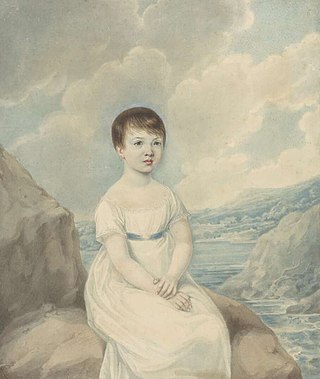
Elizabeth Isabella Throsby was an Australian survivor of the 1809 Boyd massacre.
References
- ↑ Zuidhoek, Arne (2015). A-Z Pirate Encyclopedia: Deprived of God & Country. Utrecht: Uitgeverij Julius de Goede BV. Retrieved 29 September 2017– via Google Books.
- ↑ Hughes, William; Punter, David; Smith, Andrew (2015). The Encyclopedia of the Gothic. West Sussex UK: John Wiley & Sons. p. 490. ISBN 9781119210467 . Retrieved 5 July 2018– via Google Books.
- ↑ "Buccaneers | Charlotte de Berry". 3 September 2017. Archived from the original on 3 September 2017. Retrieved 5 July 2018.
- ↑ Konstam, Angus (2011). Pirates: The Complete History from 1300 BC to the Present Day. Guilford CT: Rowman & Littlefield. p. 168. ISBN 9780762768356 . Retrieved 5 July 2018.
- 1 2 3 Duncombe, Laura (2017). Pirate Women: The Princesses, Prostitutes, and Privateers Who Ruled the Seven Seas. Chicago IL: Chicago Review Press. ISBN 9781613736043 . Retrieved 5 July 2018.

